Get a Complete Picture on Everything You Need to Consider When Designing & Building Your Cannabis Grow Room.
Picture this: a sanctuary where plants thrive under carefully calibrated conditions, bathed in the perfect balance of light, temperature, and humidity. A grow room is a sanctuary for cannabis plants, where expert cultivators work their magic to produce top-notch buds that delight both the senses and the soul. In this blog, we will unlock the secrets to creating the ultimate grow room – a haven where your cannabis plants can reach their full potential, delivering bountiful harvests overflowing with potency and flavour.
So, whether you’re a passionate cannabis enthusiast looking to grow your stash or an aspiring cannabis farmer eager to delve into the world of commercial cultivation, this blog has got you covered. From discussing the ideal grow room setup to exploring legalities you’ll want to consider, we will guide you through every step of the journey, ensuring you acquire the knowledge and skills to become a successful cannabis cultivator.
What is a Cannabis Grow Room?
A cannabis grow room is a controlled environment specifically designed to cultivate cannabis plants. It is essentially an indoor space where all aspects of the growing process, from lighting to temperature and humidity, can be closely monitored and adjusted.
The purpose of a cannabis grow room is to provide the ideal conditions for cannabis cultivation, ensuring the plants thrive and produce the highest quality yield. By creating a controlled environment, cannabis farmers can fine-tune every aspect of the growing process, resulting in consistent and predictable harvests.
Growing Cannabis Year-Round
One of the key advantages of a grow room is that it allows farmers to cultivate cannabis year-round, regardless of the external climate or geography. This is especially beneficial in regions with harsh weather conditions or where cannabis cultivation may be restricted outdoors.
In a grow room, farmers have complete control over the temperature, humidity, and lighting. This allows them to recreate the optimal conditions for cannabis plants, regardless of the time of year or the weather outside. Whether it’s a scorching summer or a freezing winter, a well-designed grow room can provide the perfect environment for cannabis plants to thrive.
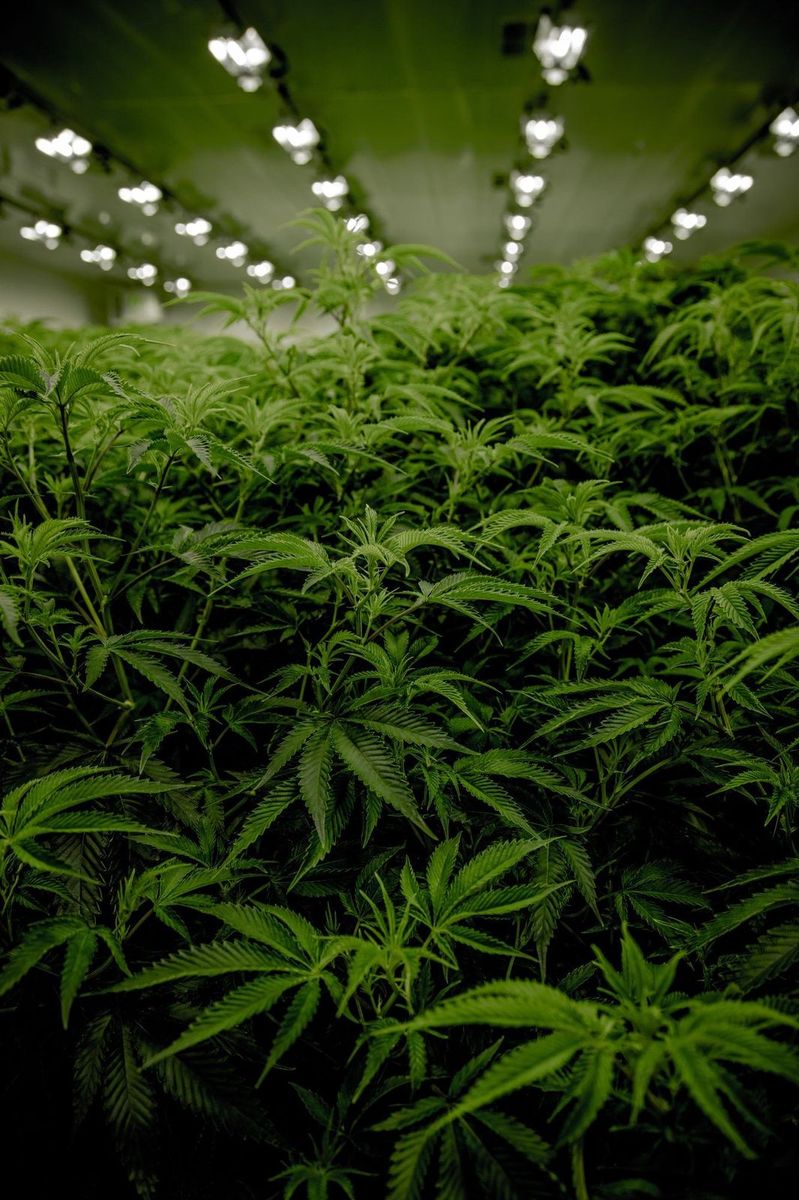
Effective Pest & Disease Control
Grow rooms also give farmers the ability to protect the plants from pests, diseases, and other external factors that can negatively impact the crop. By sealing off the grow room from the outside environment, farmers can minimize the risk of infestations and ensure the plants remain healthy and pest-free.
More Efficient
A grow room also allows for efficient use of space. With vertical growing systems and carefully planned layouts, farmers can maximize their cultivation capacity and produce higher yields in a limited area. This is particularly valuable in areas where land is scarce or expensive.
Related Reading
What Makes a Good Cannabis Grow Room?
The best cannabis grow rooms are undeniably those that are controlled growing environments. This means that the building is completely sealed off from the outdoors, ensuring that no unwanted elements can enter and interfere with the cultivation process. But it doesn’t stop there – every aspect of these rooms, from the systems for electricity, water, and air, are meticulously designed to be compatible with each other.
Creating a controlled growing environment allows cultivators to have full control over every factor that affects their plants’ growth. Temperature, humidity, lighting, and even CO2 levels can all be carefully monitored and adjusted to create the perfect conditions for cannabis cultivation. This level of control enables cultivators to consistently produce high-quality, uniform harvests, ensuring that every strain reaches its full potential in terms of potency, flavour, and aroma.
Decontamination Areas
The best of the best grow rooms go beyond just the cultivation area. They also have additional facilities, such as a decontamination area. This is a space where growers can thoroughly clean themselves and their tools before entering the cultivation area. Maintaining strict cleanliness standards is crucial in cannabis farming, as any contamination can lead to the growth of mold, mildew, or pests, which can severely impact the quality of the final product.
Drying and Curing Facilities
Top-tier grow rooms also include dedicated drying and curing facilities. These spaces play a pivotal role in the cannabis cultivation process by ensuring that harvested flowers reach their full potential in terms of flavour, aroma, and potency.
Drying rooms are meticulously controlled environments where freshly harvested cannabis is carefully hung to gradually reduce moisture content. Following the drying phase, curing rooms take over, providing the ideal conditions for the slow, controlled aging of the buds. Just as in the cultivation area, attention to detail and precision are key in these facilities, showcasing the commitment to excellence that defines the best in cannabis cultivation.
Is a Grow Room Better than a Grow Tent?
A cannabis grow room is undoubtedly a superior investment compared to a cannabis grow tent in the long run. Not only does a grow room offer increased space and scalability, but it also provides greater control over the cultivation environment, leading to higher yields and better-quality crops. Let’s delve into the reasons why a cannabis grow room should be your go-to choice when it comes to maximizing your investment potential.

Ability to Expand and Customize
A grow room offers ample space for expansion and customization. Unlike grow tents, which typically offer limited square footage, grow rooms can be designed to fit any size or shape you desire. With a larger space, you have the freedom to experiment with different growing techniques and equipment, ultimately optimizing your cultivation efforts. Grow tents don’t offer the same versatility in experimenting with different growing techniques and equipment because of the limited space, height restrictions, and lack of ventilation or temperature control.
Precise Climate Control
The versatility of a grow room allows for more precise control over environmental factors such as temperature, humidity, and lighting. These variables play a crucial role in the healthy growth of cannabis plants and their overall yield and quality. With a grow room, you can install professional-grade HVAC systems, advanced lighting solutions, and automated irrigation systems. This level of control ensures that your plants receive the optimal conditions throughout their lifecycle, maximizing your harvest potential.
Better Insulated
A cannabis grow room provides better insulation, which is crucial for maintaining a stable microclimate. Grow rooms are typically constructed using insulated walls, floors, and ceilings, which help regulate temperature and conserve energy. This insulation not only provides a consistent environment for your plants but also reduces the risk of pests and diseases, ultimately safeguarding your investment.
More Secure
Grow rooms offer enhanced security compared to a grow tent. By building a dedicated space for your cannabis cultivation, you can implement robust security measures such as surveillance cameras, access control systems, and alarm systems. These measures not only protect your plants from theft or vandalism but also ensure compliance with legal regulations, providing peace of mind throughout the cultivation process.
Long-Term Cost Savings with Scale
A cannabis grow room offers greater long-term cost savings. While the initial investment may be higher compared to a grow tent, the ability to scale up and optimize your cultivation efforts in a grow room can lead to significantly higher yields. This translates into more revenue generation and a quicker return on investment. Additionally, the improved control over environmental factors allows for better resource management, reducing energy and water consumption, and therefore lowering operational costs over time.
Do You Need a License to Build a Grow Room?
Building a grow room for cannabis cultivation in Canada is not illegal. The legality comes into play when it comes to actually growing cannabis in that grow room without a proper license. In Canada, individuals are allowed to grow up to four cannabis plants per residence for personal use, as long as they have the appropriate license.
To cultivate more than four plants, individuals must apply for a federal license or become a designated grower for medical purposes. This process involves submitting an application to Health Canada and meeting specific requirements.
That being said, you shouldn’t try to set up a large-scale cannabis grow room without proper licensing. It’s easy for authorities to monitor & identify grow rooms through energy usage, and some sophisticated methods of intelligence monitoring methods. Let’s explore them further below, along with background context.
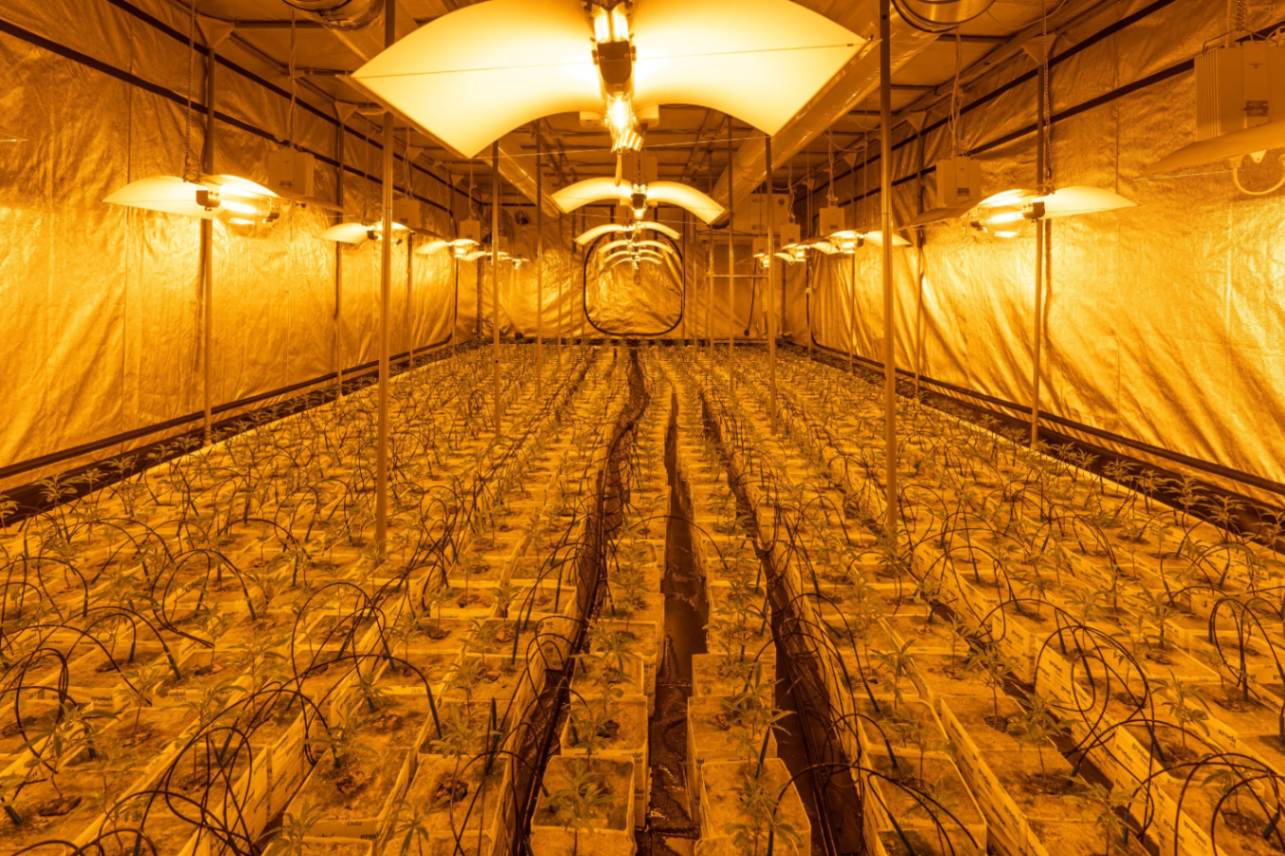
Large-Scale Grow Rooms Require a Lot of Energy
Growing cannabis in a large-scale grow room requires a significant amount of energy and electricity. Cannabis plants require a specific set of environmental conditions to thrive and produce high-quality yields. These conditions include controlled temperature, humidity, and lighting. To achieve and maintain these conditions, growers rely heavily on artificial lighting systems, ventilation systems, and other equipment that consume a substantial amount of electricity.
Law Enforcement Grow Room Detection Strategies
Large-scale cannabis grow operations may be able to go unnoticed due to their discreet location and efficient energy management techniques. However, law enforcement authorities have developed strategies to detect these operations by monitoring electricity provider records and using thermal imaging cameras.
Electricity Usage Patterns
Electricity provider records can reveal patterns of excessive electrical consumption, which can be a telltale sign of a large-scale grow room. By analyzing the data, authorities can identify sudden and substantial spikes in usage that are inconsistent with residential or commercial consumption patterns. This method allows them to target specific properties for further investigation.
Thermal Imaging
Thermal imaging cameras, also known as infrared cameras, are another effective tool used by law enforcement to detect cannabis grow rooms. These cameras can detect and capture the infrared radiation emitted by objects based on their surface temperature. Since large-scale grow rooms often generate excess heat due to high-intensity lighting systems, thermal imaging cameras can identify buildings with unusual instances of excess heat radiating or escaping. This abnormal heat signature can indicate the presence of a grow room and prompt further investigation.
How Big of a Grow Room Do You Need?
When it comes to cannabis farming in Canada, the size of the growroom is a crucial factor to consider. The scale of the operation will determine the ideal size of the grow room, as it directly impacts the productivity and efficiency of the cultivation process. Let’s break it down for different scales: small-scale personal grow room, mid-scale small farm, and high-scale commercial cannabis farm.
Small-Scale Personal Grow Room
For a small-scale personal grow room, an ideal size would typically range from 2 to 10 square meters. This size allows for a single or a few plants to grow in a controlled environment. It’s important to note that personal cultivation in Canada is limited to four plants per household, so a smaller space is both practical and manageable. Additionally, a smaller grow room can be set up in a spare room, closet, or basement, making it convenient for personal use without occupying excessive space.
Mid-Scale Small Farm
Moving on to a mid-scale small farm, the ideal size for the grow room would typically range from 50 to 100 square meters. This size provides enough space to cultivate a significant number of plants while maintaining proper care and control over the growing environment. A mid-scale small farm can cater to local demand and supply dispensaries or retailers with a consistent quantity of high-quality cannabis. It offers an opportunity to maximize yield and optimize the cultivation process, ensuring a steady production flow while maintaining manageable overhead costs.
High-Scale Commercial Farm
When it comes to a high-scale commercial cannabis farm, the grow room size needs to be significantly larger to accommodate the extensive cultivation operation. An ideal size for a commercial cannabis farm’s grow room can range from several hundred to several thousand square meters. This larger space allows for the cultivation of a substantial number of plants, often in the tens of thousands. A high-scale commercial cannabis farm requires a sophisticated infrastructure, including climate control systems, lighting setups, and irrigation systems, all of which require ample space. The larger grow room size allows for higher production volumes, enabling commercial farmers to meet the demands of the ever-expanding cannabis market.
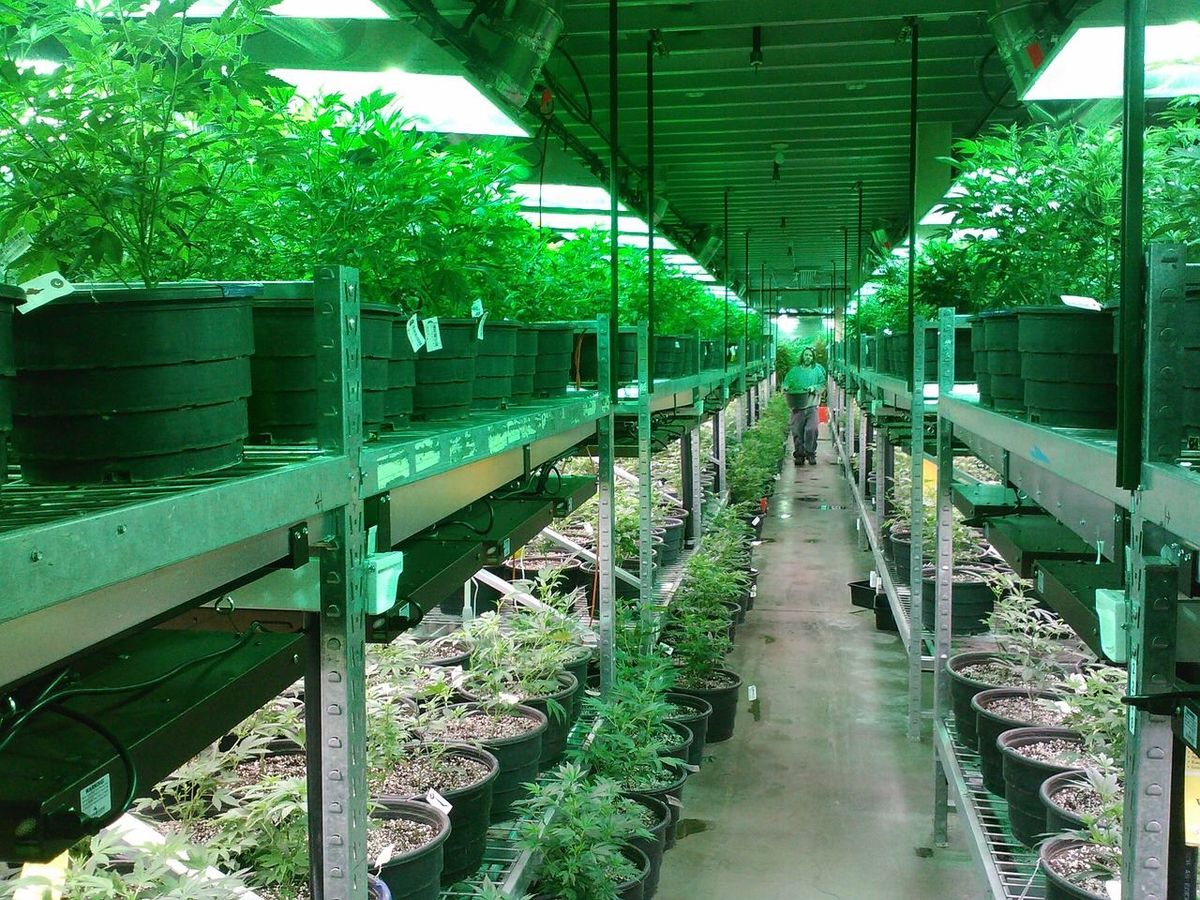
Related Reading
- Cannabis Manufacturing
- List Of Licensed Producers In Canada
- Cannabis Courses
- Cannabis Licensing Application Guide
Pro Tip for Cannabis Producers
Seed-to-sale cannabis software is an invaluable tool for cannabis producers in Canada, as it helps automate CLTS reporting and CRA reporting processes. By integrating this software into their operations, cannabis producers can streamline the entire process from the cultivation of cannabis plants to the sale of their products. This software provides an efficient and accurate way to track and report every step of the production and distribution process, ensuring compliance with regulatory requirements.

Did you know? GrowerIQ has an industry-leading Seed-to-Sale Cannabis Software (with quality management built in) that is designed to uncomplicate cannabis production for cannabis producers throughout the world.
Key Factors to Consider When Designing a Grow Room
When it comes to designing a cannabis grow room, several factors are crucial to consider to create the ideal environment for the plants to flourish. These factors include light-proofing, airtightness, air exchange or air movement systems, climate control, and safety measures.
Light-Proofing
Light-proofing is of utmost importance in a grow room because any light leakage can be irritating to the plants. Grow lights are extremely bright, and any unwanted light can adversely affect their performance. By ensuring that the grow room is light-proof, we can provide the plants with the darkness they need for proper growth and development.
Air Tight Environment
By creating an airtight environment, we can contain the strong smells and aromas that cannabis plants produce. This is particularly important if the grow room is located in a residential area where odour control is crucial. Additionally, an airtight room makes it easier to maintain climate control as there will be minimal air exchange with the surrounding environment.
Air Movement
In an ideal grow room, incorporating an air exchange or air movement system is highly beneficial. This allows fresh air to be continuously available to the plants, which in turn helps them grow healthier. Moreover, moving air within the grow room supports the wet-dry cycle of the growing medium by promoting evaporation. This helps prevent the growth of mold or mildew and ensures the plants receive sufficient oxygen.
Proper Climate Control Systems
By adjusting the humidity and temperature, we can create an environment that is optimal for the plants. Different stages of growth require different conditions, and maintaining the right climate can significantly impact the yield and quality of the final product.
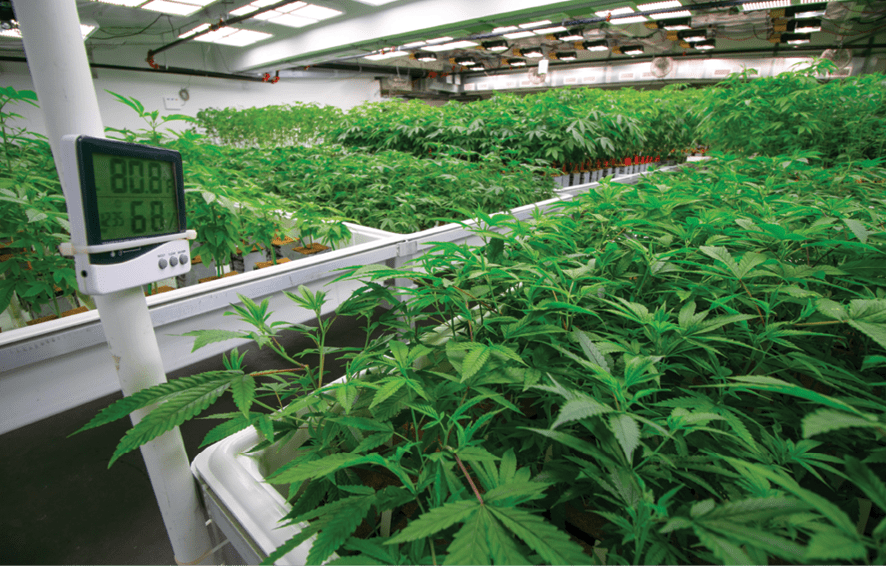
Safety Measures
Cannabis cultivation involves the use of electrical equipment and lighting systems, which can pose a fire hazard if not properly installed and maintained. Implementing safety protocols, such as using fire-resistant materials and ensuring proper ventilation, is crucial to protect the plants and the individuals working in the grow room.
How Do You Build a Grow Room?
Building a cannabis grow room can be an exciting and rewarding endeavour for cultivators in Canada. To ensure a successful operation, it is crucial to follow a step-by-step process that covers everything from administration and legalities to design, construction, and testing. Let’s dive into each of these steps in detail.
1. Administration and Legalities:
Before building a cannabis grow room, it is essential to comply with all the necessary administrative and legal requirements. This includes obtaining a license from Health Canada, which involves submitting an application, undergoing security screening, and demonstrating compliance with various regulations.
2. Design:
Once the administrative and legal aspects are in order, the next step is to design the grow room. This involves determining the size and layout of the room, considering factors such as the desired production capacity, number of plants, and available space. It is essential to consider the specific needs of cannabis plants, including lighting, temperature, humidity, and ventilation requirements. The design should also incorporate efficient use of space, ease of workflow, and accessibility for maintenance and harvesting.
3. Building:
After finalizing the design, it’s time to start building the grow room. Begin by preparing the space, ensuring it is clean, free from pests, and properly insulated. Install the necessary infrastructure, including electrical systems, plumbing, and ventilation. It is crucial to engage qualified professionals to ensure compliance with building codes and safety regulations. Consider using energy-efficient systems and sustainable building materials to minimize environmental impact.
4. Cultivation Systems:
Once the build-out is complete, it’s time to install the cultivation systems. This includes setting up the lighting system, which is typically a combination of artificial lighting (such as high-intensity discharge or LED lights) and natural lighting (if available). The temperature and humidity control systems should be installed to create an optimal environment for plant growth. Additionally, irrigation systems, nutrient delivery systems, and CO2 supplementation should be incorporated to ensure healthy plant development.
5. Testing and Calibration:
Before starting the cultivation process, it is crucial to thoroughly test and calibrate all the systems. This includes testing the lighting levels, temperature and humidity control, CO2 levels, and nutrient delivery systems. Regular monitoring and calibration should be conducted to maintain optimal conditions for plant growth. It is also important to conduct periodic tests for pests, pathogens, and mold to ensure a healthy and safe cultivation environment.
Related Reading
- Wholesale Cannabis
- Cannabis Packaging
- Micro Cultivation Building Requirements
- Cannabis Packaging Canada
- Growing Cannabis Indoor
- Cannabis Podcast
What Growing Methods Can You Use in a Grow Room?
Cannabis cultivation has come a long way in Canada, and today, cultivators have a wide range of options when it comes to growing methods. One can choose to grow cannabis in a grow room using traditional soil-based methods or opt for soilless options like hydroponics, aeroponics, vermiculite, perlite, coconut husk, and rock wool. Each method has its advantages and considerations, but when it comes to indoor grow rooms in Canada, one method emerges as superior.
Soil-Based Growing Method for a Grow Room
Soil-based cultivation is the traditional method of growing cannabis, and it involves using soil as the growing medium. Soil is rich in nutrients and provides a stable environment for the roots. It also holds water well, which can be beneficial for the plants. However, soil-based cultivation requires proper drainage to avoid waterlogging and may be prone to pests and diseases. Additionally, it can be challenging to control the nutrient levels in the soil, which may lead to imbalances or deficiencies.
Soilless Growing Method for a Grow Room
On the other hand, soilless cultivation methods like hydroponics, aeroponics, vermiculite, perlite, coconut husk, and rock wool offer several advantages for indoor grow rooms in Canada.
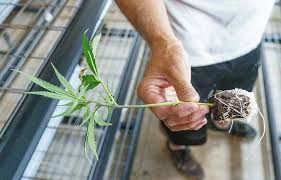
Superior Growing Method for Indoor Grow Rooms in Canada
When it comes to indoor grow rooms in Canada, the superior growing method is undoubtedly hydroponics. Canada’s climate poses challenges for outdoor cultivation, making indoor grow rooms the preferred choice for many cultivators. Hydroponics allows for precise control over environmental factors like temperature, humidity, and light, ensuring optimal growing conditions for cannabis plants. Moreover, it maximizes space utilization, making it ideal for indoor grow rooms where space is often limited. Here are some other reasons why Hydroponics is the superior indoor growing method in Canada.
| Reason | Explanation |
|---|---|
| Precise Nutrient Control | Hydroponics allows for precise control of nutrient levels and ratios, ensuring optimal plant growth. |
| Enhanced Nutrient Uptake | The absence of soil minimizes nutrient loss, leading to faster nutrient absorption and plant growth. |
| Reduced Risk of Soil-Borne Diseases | The absence of soil reduces the risk of soil-borne pathogens and diseases, resulting in healthier plants. |
| Water Efficiency | Hydroponic systems are more water-efficient, recycling and reusing water, minimizing waste. |
| Improved Oxygen Delivery | Efficient oxygen delivery to plant roots promotes better nutrient uptake and overall plant health. |
| Optimal pH Control | Maintaining the ideal pH range is easier, ensuring nutrient availability and preventing nutrient lockout. |
| Controlled Environmental Factors | Precise control over temperature, humidity, and CO2 levels optimizes year-round growing conditions. |
| Space Utilization | Hydroponics maximizes space utilization, allowing plants to grow closer together without soil competition. |
| Consistent Yields | Hydroponic systems are more water-efficient, recycling and reusing water, and minimizing waste. |
| Cleaner and Sustainable | Produces less waste, reduces the need for pesticides, and can be designed with sustainability in mind. |
| Research and Experimentation | Offers a platform for scientific research and experimentation to fine-tune growing techniques and nutrient formulas. |
How Seed to Sale Cannabis Software Helps Set up a Successful Grow Operation
GrowerIQ’s seed-to-sale software is a game-changer for cannabis producers looking to uncomplicate their cannabis production. By integrating compliance, cultivation, manufacturing, quality management, and CRM all in one easy-to-use platform, GrowerIQ provides a comprehensive solution for global cannabis operators.
Discover how GrowerIQ’s seed-to-sale software can help you set up all of the components of a successful cannabis production operation without any hassle. Questions we haven’t covered? Please reach out and let us know. GrowerIQ serves clients coast to coast, and we’re ready to help your team today.
Streamline Cannabis CultivationAbout GrowerIQ
GrowerIQ is changing the way producers use software - transforming a regulatory requirement into a robust platform to learn, analyze, and improve performance.
To find out more about GrowerIQ and how we can help, fill out the form to the right, start a chat, or contact us.

